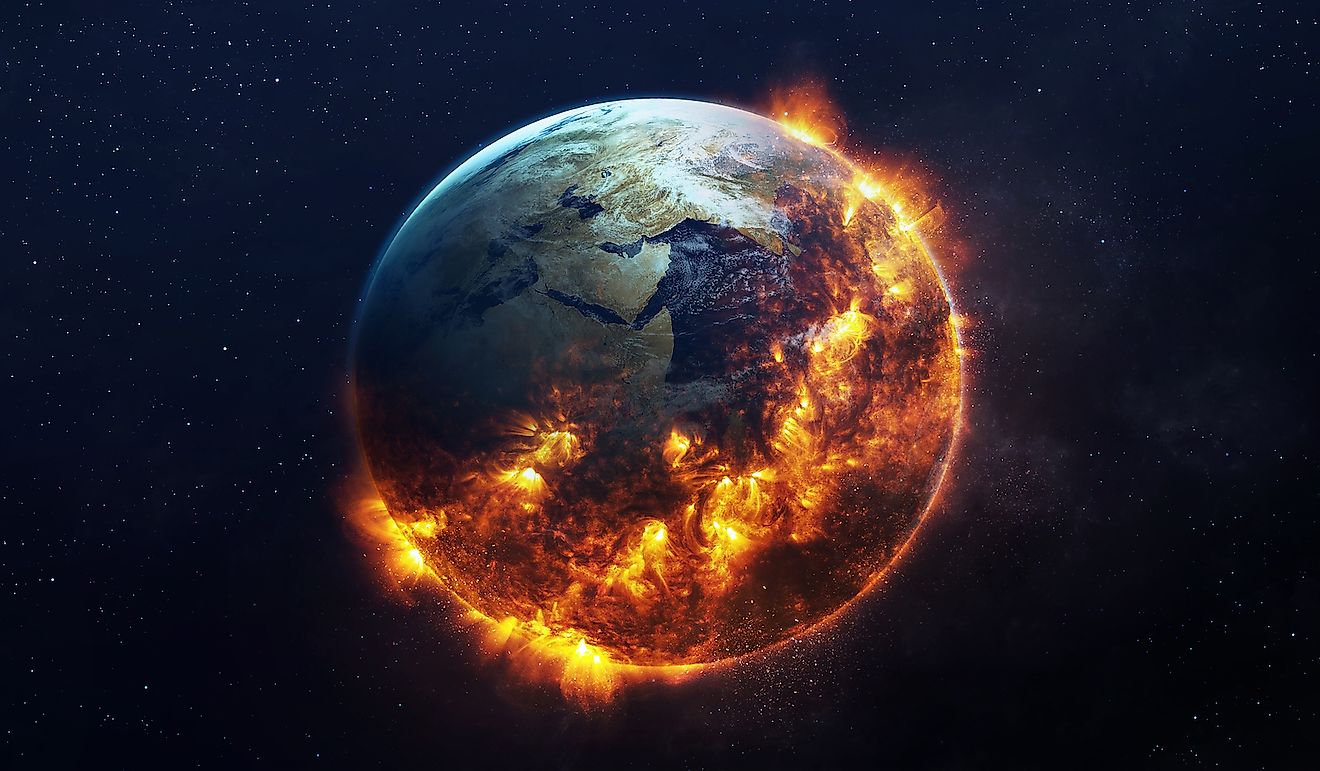The Devonian Extinction

The Devonian extinction events were a series of extinctions that mainly affected the marine species during the Devonian Period (approximately 419 million to 359 million years ago). There were three major extinctions during the last half of the Devonian Period, each separated by about ten million years. The three events included were the Taghanic Event, Kellwasser Event, and the Hangenberg Event. The three events are responsible for the extinction of 70-80% of all animal species during the Devonian Period and about 19% of the families of Devonian animals. However, the Late Devonian extinction is the lowest-ranked extinction event among the “Big Five” extinction events in the Earth’s history.
The Extinction Period and Timing
During the late Devonian, Gondwana (supercontinent) covered much of the Southern Hemisphere while Siberia covered the Northern Hemisphere. On the other hand, Laurussia was moving towards Gondwana. Plants that were similar in form to those that existed during the Ordovician Period had now developed roots and seeds.
The rate of extinction appears to have been higher for about 20-25 million years of the Devonian. During the period, at least 8 events were distinct but only two stood out as they were severe and widespread; the Kellwasser and the Hangenberg events. The Kellwasser Event took place at the beginning of the last phase of the Devonian at the Frasnian-Famennian boundary (approximately 372 million years ago). The event was characterized by the extinction of many conodont species, beloceratid groups, trilobites, and colonial corals. Most of the references of the Late Devonian extinction are those of the Kellwasser event.
The Hengenberg Event occurred towards the end of the Famennian stage and is found on the Devonian-Carboniferous boundary. It marks the last extinction event of the Devonian Period and may have taken place 360 million years ago. The event affected both terrestrial and marine species including phacopid trilobites, coiled cephalopods, goniatites, and the clymeniids.
Possible Causes
Since the extinction events occurred over a long period, it is not possible to point out a single cause or separate the cause from effect. According to the sedimentary records, the Devonian was a period of environmental changes which affected the organism, leading to their extinction. However, what caused the changes are still open to debate. From the sedimentary records, there is evidence of widespread anoxia at the bottom of the ocean. As a result, the carbon burial rate shot up to the devastation of the benthic organisms. However, the debate has been as to whether the events were caused by greenhouse effects, climate extremes resulting from the amount of solar radiation, or processes that are confined to the earth.
Other evidence points to the fact that extinction may have been caused by rapid global cooling or warming. In Late Devonian, extinction events related to a period of abrupt cooling linked lowering of the sea level and development of glacier. Scientists argue that changes in plants at the Kellwasser events are consistent with global cooling. Another possible cause of the extinctions is bolide impact such as in the case of the Siljan Ring. Other sources suggest that the decrease in diversity resulted from decreased speciation rather than an increase in extinction.











